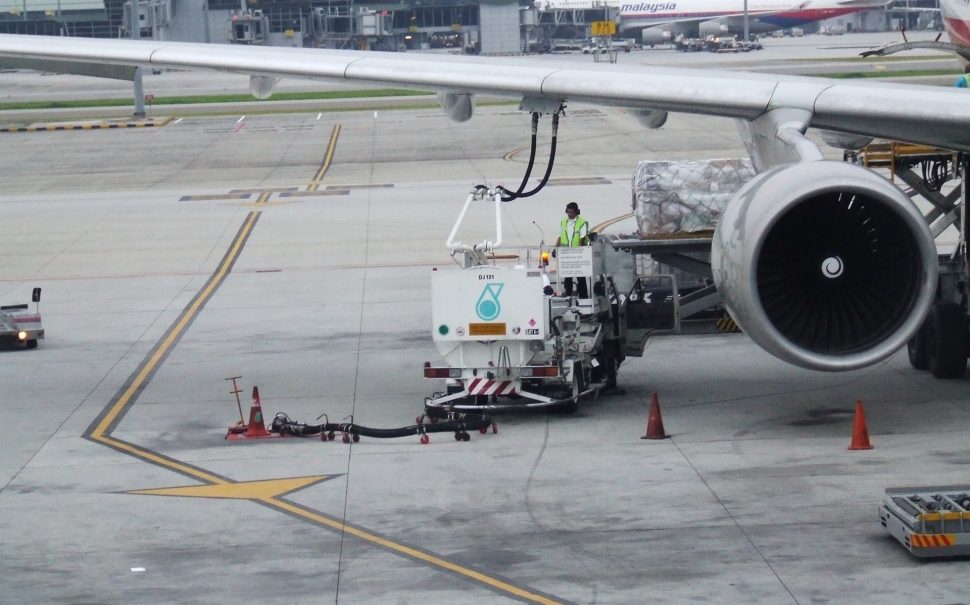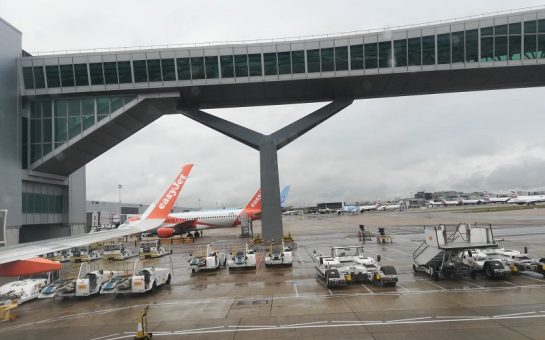Heathrow Airport has called for more government support for the UK’s sustainable aviation fuel (SAF) industry to help aviation reach its carbon reduction targets.
Heathrow claims SAF can help reduce carbon emissions by up to 70% compared to traditional jet fuel but alleges the UK will fall behind the US and the EU in production volumes without support.
The airport is hoping for price support measures to mitigate the costs of SAF, as well as a mandate for all airlines to hit a target of 10% SAF by 2030.
John Holland-Kaye, Heathrow chief executive, said: “Sustainable aviation fuel is not just about protecting the benefits of aviation.
“It’s about economic opportunity, creating jobs here in the UK and securing the country’s future energy supplies.”
Lagging behind
SAF currently costs four times as much to produce as kerosene.
To combat the price difference and encourage investment, the US and the EU have recently introduced measures to lure producers.
The US’s Build Back Better Act includes government grants and tax breaks for SAF producers, while the European Parliament aims to accelerate the decarbonisation of flying with its Sustainable Aviation Fund.
Holland-Kaye said: “If Britain really wants to compete with the scale of ambition and the credible action seen from the US and Europe, supportive Government policy is needed and it is needed now.”
Tiny fraction
SAF currently makes up just a tiny fraction of all airline fuel in the UK and worldwide.
At Heathrow, it accounted for less than 1% of all refuelling last year.
The world’s biggest user of SAF, United Airlines, currently uses just one million tonnes in a typical year, out of its total fuel usage of four billion tonnes.
The International Air Transport Association (IATA) has estimated that, if the global aviation industry is to reach net zero by 2050, worldwide production of SAF would need to reach 449bn litres.
In 2019, just 50m litres were produced and IATA’s current predictions are for 8bn litres by 2025 and 23bn litres by 2030.
Misleading claim
SAF is made from a variety of sources such as agricultural waste, feedstocks and cooking oil.
Scientists and industry experts are therefore sceptical about its ability to solve aviation’s emissions problem.
Tim Johnson, director of the Aviation Environment Federation (AEF), points out that it doesn’t release any less CO2 when burned than conventional aircraft fuel.
He said: “It’s a misleading claim that SAF reduces carbon emissions. When burned in a plane, SAF emits the same amount of CO2 as kerosene.
“The saving is actually from the fact that plant feedstocks absorb CO2 when growing, producing a net reduction. So really it works like an offset.”
No sustainable alternative
A recent publication by the Royal Society claimed there is no sustainable alternative to jet fuel that could support current levels of flying.
Its report last month on alternative aviation fuels pointed out the land use requirements of biofuels are likely to be prohibitive.
It found that to produce enough SAF to maintain current levels of flying would require around half of all the UK’s agricultural land.
Johnson added that other decarbonisation technologies, such as carbon capture and using green hydrogen to make synthetic fuel, would also require huge amounts of renewable energy.
The elephant in the room
A report commissioned last year by AEF says the government is relying too heavily on SAF and that what is needed to meet emissions reduction targets is less demand for flying.
Cait Hewitt, policy director at AEF, said: “There will be no easy answers, and none that are able to deliver green flights any time soon.
“Airlines and airports, having failed to bring any zero carbon technologies to the market in the decades since the climate challenge became clear, have now begun claiming that a ramp-up of so-called sustainable aviation fuel is going to take the carbon out of flying.
“The elephant in the room is, of course, the need to fly less.”
Image by Simon_sees via Wikimedia Commons licensed under CC BY 2.0




Join the discussion